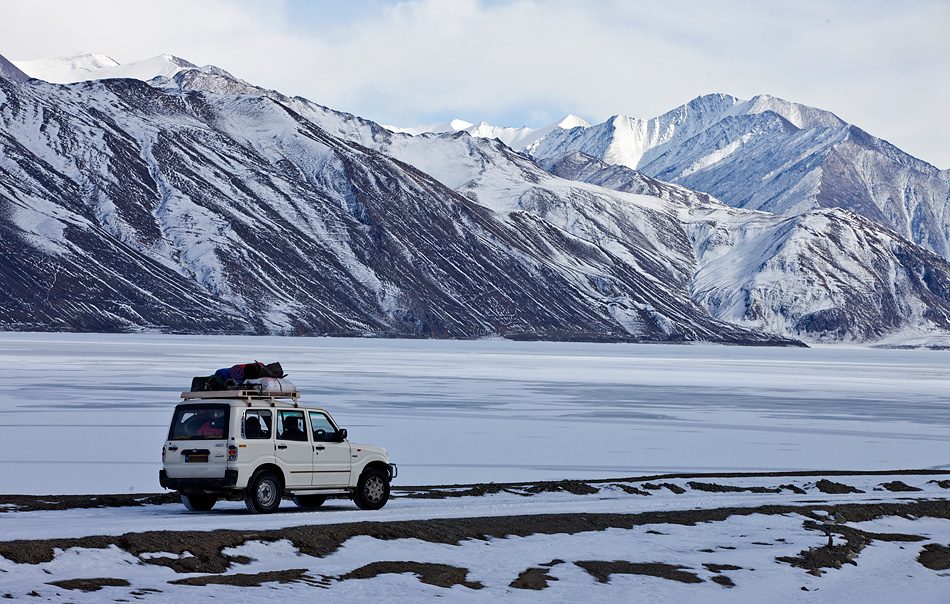
Ladakh has been in the news due to fighting between Indian and Chinese forces along disputed border with China’s Tibet Autonomous Region (TAR). Ladakh known as a land of excessive passes is well connected with Jammu and Kashmir, between Karakoram pile selection from the north and the Himalayas in south. India’s Ladakh consists of Leh and Kargil zones.
Clear linear borders did not existed in the Himalayas because its free inhabitants and deeply religious communities conceptualized it differently, and because it was difficult and pointless even for political states to clearly delineate borders in sparsely populated high altitude areas, unlike today when all global contenders are hungry for more resources / land grabbing for more of its millionaires and projects of development via destruction! There were difficulty in establishing a border between British India and the Qing Empire, and hence existed several different British lines, none of which provided a final resolution as to where the border between Ladakh and Tibet lay. Imperial strategy, not historical or cultural considerations were used for proposing several border lines: the Ardagh-Johnson line of 1865, which pushed the border up the most to the north and east, the more conservative Macartney–MacDonald Line of 1899, and a third line that was never seriously considered because it would have drawn the boundary along the Karakoram range to the south of the effective border, giving up parts of Ladakh.
Currently, Tibet lay in Chinese sphere-of-influence, and Ladakh is associated with political world of Indian subcontinent. Despite their common history, religious heritage, and culture, how and why did Tibet and Ladakh became politically distinct, fed-up with ruling classes? The geographic and cultural region associated with Tibet has traditionally been divided into four historical regions.
Three are in China: Amdo in the north, now associated mostly with Qinghai and Gansu provinces in China, Kham in the east, split between Sichuan province and TAR, and Ü-Tsang, or central Tibet, the region is generally identified with the idea of Tibet, both culturally and administratively, although parts of Ü-Tsang extend to northern Nepal and the states of Sikkim and Arunachal Pradesh. The fourth region, Ngari, is partially in China, where there is a Ngari prefecture in western Tibet, but much of the historical Ngari region is now in India. The most remote from the rest of Tibet, Ngari’s average elevation is 15,000 feet (4,500 meters). Its proximity to the Indo-Ganges plains has always opened it to Indian influences to a greater extent than the rest of Tibet: several prominent Hindu and Buddhist sites, such as Mount Kailash of Shiva are located in Ngari.
Leh Ladakh throughout Trans Himalayan are becoming new destinations for adventure sporting activities and vacation for voyage athletics like mountain climbing, 4×4 firefox biking and river rafting. Idyllic panorama associated with Ladakh offers several locations viz Leh, Drass Vly, Surn Area, Kargil, Zangskar, Zangla, Rangdum, Padum, Phugthal, Sani, Shyok Vly, Sankoo, Sodium etc. Most fascinating is middle Ladakh with its numerous monasteries and communities.. Stok, Hemis, Thiksey, Chemrey, Phyang, Lamayuru, Spituk, Ridzong, Alchi Monasteries and communities of Basgo, Nimoo, Sankar etc.
Tibet was caught up in politics of East and Central, with various Chinese and Mongolian dynasties attempting to exercise imperialism. Central Tibet eventually came to be ruled from Lhasa by the spiritual leaders of the Gelug (Yellow Hat) school of Tibetan Buddhism; the title of the ruler of Tibet, Dalai Lama, was bestowed by a Mongol leader, Atlan Khan, in 1578. However, the history of the western part of the Tibetan plateau, the Ngari region, especially those of the Guge and Maryul kingdoms, took a different route.
Before Tibet-Ladakh-Mughal War, Ladakh controlled directly or indirectly most of the territory along what is today the northwestern border between India and China. Lifestyle in Ladakh reveals similarity with Tibetan lifestyle and so Ladakh might be referred to as “Little Tibet. Leh is a great vacation spot connected with several abodes related to Buddhism and Southern Asian people – Buddhists Gompas or Monasteries provide you extremely strict Buddhist men and women. Ancient Tibetan records indicate that there were already people living in the western part of the plateau, called the Zhang Zhung, who practiced a pre-Buddhist religion, Bon. The Zhang Zhung capital Kyunglung was located on the Sutlej River near Mount Kailash, near the current border between China and India.
In 1834, a declining Ladakhi state was annexed by the Sikh Empire, which had arisen to control Punjab and Kashmir following the decline of the Mughal Empire, by General Zorawar Singh in 1834. A subsequent Sikh invasion of Tibet was halted in 1842, and the old borders and obligations between Ladakh and Tibet were reaffirmed by the Treaty of Chushul, of which the Qing Empire, Tibet’s suzerain, was also a party to. Ladakh was administratively attached to Kashmir, and subsequently to the princely state of Jammu and Kashmir upon its inception in 1846. The Hindu Dogra Empire ruled Jammu and Kashmir under the aegis of the British Raj for the next century, during which, despite various tinkering, it maintained similar borders to those established in 1684.
While Ladakh is clearly rooted in Tibetan culture, its heritage is also distinctly non-Tibetan, particularly because its political history is different, its language has become mutually unintelligible with Standard Tibetan, and because, like Bhutan, it is religiously distinct from the rest of Tibet, as the Dalai Lama is not revered as much as he among Tibetans. Due to its orientation toward South Asia, and its clear history of demarcation from Tibet, it is not surprising that its people continue to wish to be distinct from Tibet and China.
